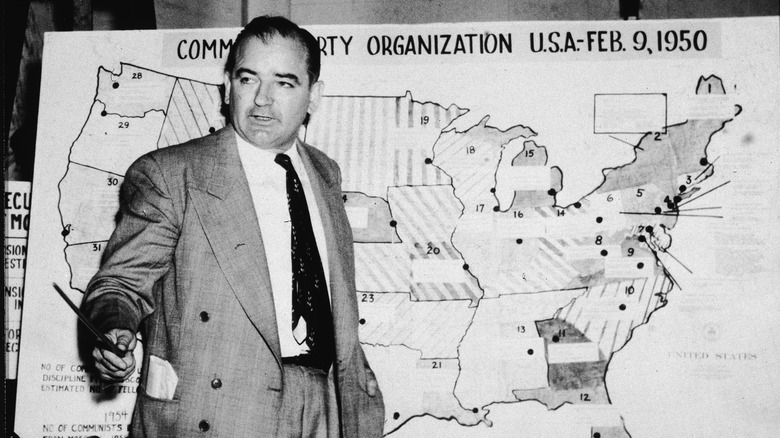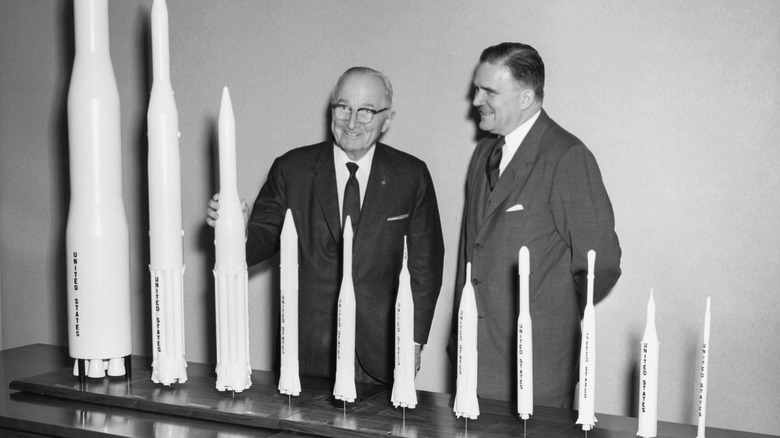Why The James Webb Space Telescope's Name Is Under Fire
The first images returning from NASA's James Webb Space Telescope have been captivating people around the world as the images present some of the clearest views we've ever had of deep space and distant galaxies. However, the occasion hasn't come without its share of controversy as some have argued that the telescope should be renamed due to its namesake's connection with the persecution of LGBTQ+ people in the middle of the 20th century, per The Guardian.
According to The New York Times, the name for the telescope was announced in 2002, when then-NASA administrator Sean O'Keefe revealed that the administration's next telescope would be named after James Webb, who served as the head of NASA during the Apollo missions of the 1960s. Webb was a strong advocate of space science and exploration, and before his work at NASA, he served as the undersecretary of state for the U.S. from 1949 to 1952. However, Webb's time in the State Department under United States President Harry S. Truman included his presence during what became known as the Lavender Scare.
Thousands lost their jobs during the Lavender Scare
Most are familiar with Senator Joseph McCarthy's crusade to find and weed out people in the United States government who he alleged with communists or communists who had infiltrated the government. The Lavender Scare is similar, only it targeted LGBTQ+ individuals and is, unfortunately, far lesser known than the Red Scare. It is thought that thousands lost their jobs out of fear that gay men and lesbians "posed a threat to national security because they were vulnerable to blackmail and were considered to have weak moral characters," according to historian David K. Johnson (via Time).
The policies had started under President Truman, with McCarthy, lawyer Ray Cohn, and FBI Director J. Edgar Hoover leading the charge, though according to History, their efforts, unlike in their search for communists, were far less in the public eye. After Dwight D. Eisenhower took office in 1953, he signed Executive Order 10450, which effectively banned LGBTQ+ individuals from working for the federal government.
Every federal employee was faced with a security investigation that often included an interrogation into parts of their private lives. The Lavender Scare reportedly forced between 5,000 and 10,000 out of their jobs.
The call to have the telescope renamed
James Webb — who died in 1992 — was working in the Truman administration during the early phases of what became known as the Lavender Scare. Additionally, Nature reported that a NASA employee named Clifford Norton had lost his job because a supervisor suspected that the individual may have been gay. This came at a time when Webb was leading NASA. It was also revealed that such firings were somewhat common until 1969.
Concerns over naming the space telescope after Webb came to prominence in 2021, when a group of scientists published an opinion piece in Scientific American stating their case for why Webb's name should be removed. In the piece, they cite evidence that indicates Webb was among the high-ranking government officials in the discussion that led to these policies.
However, O'Keefe defended his choice to name the telescope after Webb. "Arguably, were it not for James Webb's determination to fulfill the most audacious vision of his time, our capacity to explore today would be starkly different," he said. According to The New York Times, in November 2021, NASA's Astrophysics Advisory Committee asked for a more complete report into the allegations against Webb and NASA in the 1960s.


